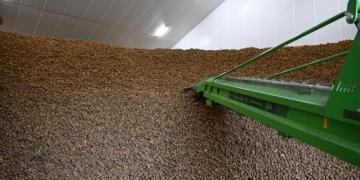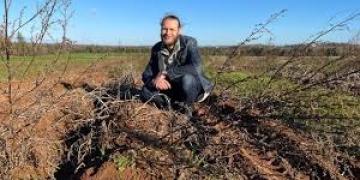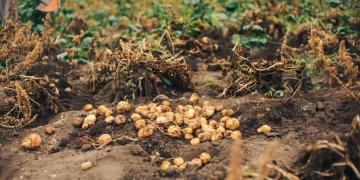Chile: Researchers combat the golden potato nematode with plant extracts and native plants.
Experts from the University of La Serena are seeking to detect and control this parasite that threatens potato production in the Coquimbo Region, which has declined from 7,000 hectares of crops to 2,500 in recent years due to disease and drought.

In order to find mechanisms for early detection of nematodes and thus help sustain the agricultural industry, including small and medium-sized farmers, the University of La Serena is developing various investigations to help control these small microorganisms, which by feeding on plant roots, generate direct problems associated with necrosis and weakening of tissues, reduction of water and nutrient absorption capacity in the roots, among others, and indirect problems, associated with the generation of wounds that are an entry route for other soil pathogens and the spread of viral particles, injecting them through their stylets, into the interior of the plants.
In this regard, Carol Krausz, a professor at the Department of Agronomy at the University of La Serena and plant pathologist and nematologist, warned that a latent threat exists in the Coquimbo Region: Globodera rostochiensis, better known as the golden nematode, which directly affects potatoes.
"The golden nematode causes problems in potato crops specifically, and although it is also found in other regions of central Chile, it is primarily located in the Coquimbo Region. For this reason, the University of La Serena’s Plant Health Laboratory is one of the few dedicated to researching this nematode," he stated.
The expert explained that this nematode has the unique ability to generate resistance structures in potato roots. These cysts can remain in the soil for more than 15 years, which makes control effectiveness low, as they resist the application of nematicides and can persist even when there are no potato crops, activating through potato root exudates.
Krausz also explained that "unlike other nematodes, this one does not directly affect tubers, but it does affect the yield and quality of potatoes, impairing their growth and development, since the roots are the plant’s feeding structures, so there is no adequate absorption of nutrients and water for the plant to function properly."
Elaborating on this, the expert warned that "these cysts correspond to already-dead adult females, but with a reproductive capacity of up to 300 eggs on average, awaiting new conditions to hatch, which is complex, since each egg hatches as a larva, and each larva is capable of intervening in a new root."
Growing problem
Regarding this issue, the academic from the University of La Serena announced that "through the various samplings we have conducted, we have detected an increased presence of nematodes mainly in the province of Elqui, especially in the towns of Pan de Azúcar, Las Rojas, and Coquimbito."
According to Krausz, "farmers, especially in La Serena, have learned to live with the nematode and have grown accustomed to having a lower yield delta, which could be estimated at up to 20% loss in potato returns, considering that at 50 cysts per 250 grams of soil, the nematode begins to cause economic problems."
This affects, he added, "our image at the national level, since this is a region with such a good climate for potato production, but it cannot generate certified seed tuber production programs due, among other pathogens, to the presence of this nematode, which means that this region can only produce potatoes for consumption."
According to the expert, part of the problem is due to the fact that "previously there was a lot of ignorance on the subject, so there was no custom of taking soil samples to analyze the presence/absence and population density of nematodes."
"As a university, we have raised awareness about the problem of nematodes, which is crucial in this case, since in this region we used to produce around 7,000 hectares of potatoes, with high yields. Unlike other regions, here we can grow potatoes up to three times a year, due to our very favorable climatic conditions. However, with drought and diseases, the cost of this crop has become more expensive, and in the last five years we have dropped to 2,300 productive hectares, with quite variable yields," he said.
Fuente: radiomontecarlo.cl




